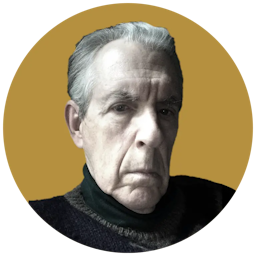With Kafka, It’s All Relative
A ‘comic biography,’ a graphic novel, and a novel that offers a powerful re-imagining of what Kafka’s life and work mean now illustrate that the market for ‘Kafkology’ is as strong as ever.

‘Completely Kafka: A Comic Biography’
By Nicolas Mahler
Pushkin Press, 112 pages
‘Einstein in Kafkaland: How Albert Fell Down the Rabbit Hole and Came Up with the Universe’
By Ken Krimstein
Bloomsbury Publishing, 224 pages
‘Life After Kafka: A Novel’
By Magdaléna Platzová
Translated from the Czech by Alex Zucker
Bellevue Literary Press, 256 pages
Kafkaland is a state of mind and a place that can be anywhere, even in two- or three-line illustrated salvos in “Completely Kafka” that would not be out of place on X. This wry biography shifts between third person and first person, present tense and past tense, non-italic and italic typeface in the same sentence, as Kafka takes the measure of himself:
“From an early age, Franz has suffered from countless fears, he is terribly afraid of mirrors because they showed me in what I consider to be my unavoidable ugliness, which, moreover, couldn’t have been completely true, for if I had really looked like that, I surely would have attracted more attention.”
Then the squiggly stick figure of Kafka examines himself in the mirror in a Rodin-like pose, and thinks — represented by four tiny circles ascending from his head, followed by a caption, “You can’t achieve anything with this kind of body.” That’s followed by three tiny circles descending to the bottom of the page, with another caption: “I shall have to get used to its continuous failings.”
On the page, such scenes seem simplicity itself, but try to describe what is happening and you may see why this amusing book is titled “Completely Kafka.”
For the science-challenged, it comes as a relief and a delight to have gravity and relativity explained in Ken Krimstein’s marvelously inventive graphic novel. Prague is where two innovative titans of science and literature converge. Mr. Krimstein’s pages are a lot busier than Mr. Mahler’s, as he juxtaposes on pages 6 and 7 two pedestrian-looking figures.
On the left-hand page is a querulous-looking Einstein, ignored when he is not hated, introduced in all caps: “HIS 1905 THEORY OF RELATIVITY STANDS ON VERY SHAKY GROUND. AND HE KNOWS IT. IN SHORT, HE’S A NOBODY.” Mr. Krimstein’s wording is deft, as the theory of relativity is about what you might call the shakiness of the universe in which space and time are not fixed.
On the right-hand page is the taller Kafka, at 6 feet and 2 inches, a column of insignificance, not yet known as the “COCKROACH-CROWNED, HOODED-EYED PROPHET OF MODERN LITERATURE WHOSE VERY NAME HAS BECOME A BYWORD FOR MECHANIZED ENNUI AND THE ROBOTIC FUTILITY OF MODERN LIFE.” He lives with his parents and has published virtually nothing: “ANOTHER NOBODY.”
“Life After Kafka,” as the title indicates, is about the other end of the Kafka spectrum, telling the story of Felice Bauer, at one time engaged to the writer. The Holocaust shatters the world Felice knew as Kafka imagined it. This novel also shatters — as biographies also do — the image of a writer whose work superintends the modernist reverence for art.
The book begins with a letter from Felice’s son, Joachim M., to Elias Canetti, who wrote a book about Kafka published in 1974. Joachim M. is a disgusted family member of the type that I have encountered in my own work on famous writers: “Unfortunately, there is always some ‘friend’ who comes along and hastens to inform me of the latest achievements in Kafkology (or is it Kafkography?), which evidently—to judge from the number of titles at least—is a highly profitable business.”
Biography is often a disruptive, even subversive, treatment of literary figures, which is why biographers are frequently treated as interlopers, aggravating family members and spoiling the pristine portrayal of writers whose words are all that counts with a certain sacerdotal class of literary critics. “Whether he was a great writer,” Joachim M. writes to Canetti, “I honestly cannot judge. What I know beyond a doubt is that he was a neurotic, a masochist, and, in regard to his relationships with women, a sadist as well.”
“Life After Kafka,” is a powerful re-imagining of what Kafka’s life and work mean now, and a rebuke to those who think a writer’s life can be summed up by paying attention only to his words.
Mr. Rollyson is the author of “A Higher Form of Cannibalism? Adventures in the Art and Politics of Biography.”

